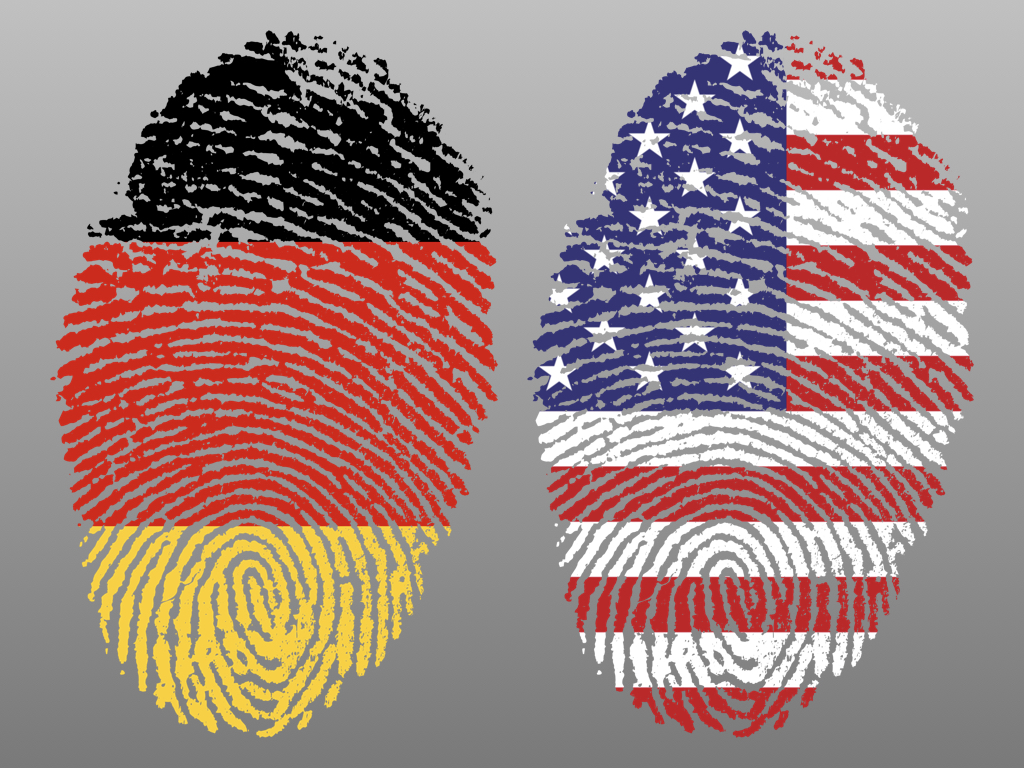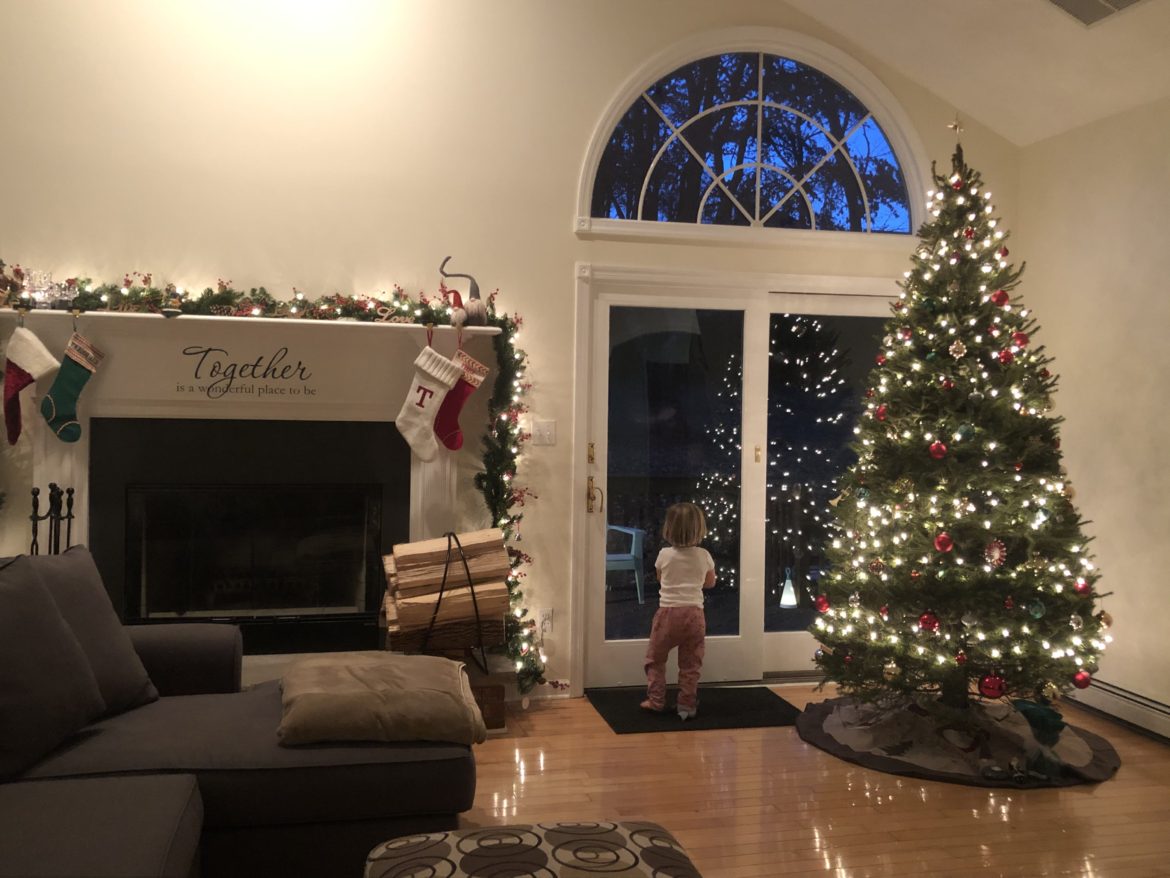When I was a child growing up in Germany, my mother would close the door to our living room on the morning of December 24. She would put a golden shooting star (home-made with tinfoil paper) on the door. As children, my sister and I knew that the living room was off limits then for the rest of the day because mom would prepare the Weihnachtsstube. We would spend the day with our dad, playing Legos, going for a winter walk or otherwise killing the time until about 5PM. That was when the Christkind would come.
The Christkind (literal translation: Christ child)…
… is an angelic figure that you could not see but who brought presents and placed them underneath the Christmas tree. At 5PM then, the door would be opened and you heard a faint bell ringing, indicating that the Christkind was there. And true thing: every time there were presents under the Christmas tree, the room was lit with candles, and instrumental Christmas music was playing quietly. As a child that was magical!
Now, more or less grown up, I live in the United States. Here, you celebrate Christmas on December 25, Christmas Day. Also, it’s not the Christkind who brings presents but …
… Santa Claus.
 Santa comes on a magic sleigh, led by eight reindeer. Traditionally, he comes through the fireplace at night when everyone is sleeping, eats the cookies and drinks the milk that children have put out for him, and then places the presents underneath the Christmas tree. When the children wake up on Christmas morning, they tend to be super excited. For example, last year, with eyes wide and a beaming smile, our two-year-old ran into the living room in her PJs to see if Santa had really put presents under the Christmas tree. That moment is probably as magical as Christmas Eve was for me when I was little.
Santa comes on a magic sleigh, led by eight reindeer. Traditionally, he comes through the fireplace at night when everyone is sleeping, eats the cookies and drinks the milk that children have put out for him, and then places the presents underneath the Christmas tree. When the children wake up on Christmas morning, they tend to be super excited. For example, last year, with eyes wide and a beaming smile, our two-year-old ran into the living room in her PJs to see if Santa had really put presents under the Christmas tree. That moment is probably as magical as Christmas Eve was for me when I was little.
How can the German and American traditions of celebrating Christmas be integrated?
As a mother and German native living in the United States, I have wondered how the German and the U.S. traditions could best be combined. Given that we raise Ella (3.5 years old) with two languages—German and English—I feel that it is very important to also support her cultural development, allowing her to form a cultural identity as a speaker of English and German. Therefore, it’s important to expose her to the minority culture (German) as much as possible. SO… how can the German and American traditions of celebrating Christmas be integrated? Or more specifically, how do you reconcile the ideas of Santa Claus on the one hand, and the Christkind on the other? Should we simply have Santa come when we celebrate Christmas in the United States and the Christkind comes when we celebrate Christmas with family in Germany?
After much thinking, here is what we decided to do in our family:
 When we celebrate Christmas in the United States, the Christkind brings one gift on Christmas Eve (December 24). That’s because Ella is part German. Then, Santa brings the rest of the presents over night and they will be underneath the tree on Christmas morning, waiting to be unpacked in PJs and slippers.
When we celebrate Christmas in the United States, the Christkind brings one gift on Christmas Eve (December 24). That’s because Ella is part German. Then, Santa brings the rest of the presents over night and they will be underneath the tree on Christmas morning, waiting to be unpacked in PJs and slippers.
When we celebrate in Germany, it will the other way around. The Christkind brings the presents, but Santa drops off one additional gift on Christmas morning.
You can surely argue that this compromise does not cover all corners, but that’s our family’s approach to building bridges between the cultures and traditions. That way, we hope to be able to contribute to Ella’s cultural exposure, helping her grow up with an idea and understanding of both traditions and … maybe it even provides twice the magic—the warm fuzzy feeling of a candle-lit, music-filled room on Christmas Eve and the excitement of dashing into the living room in PJs and slippers on Christmas morning.
In that sense: happy holidays to you all!

